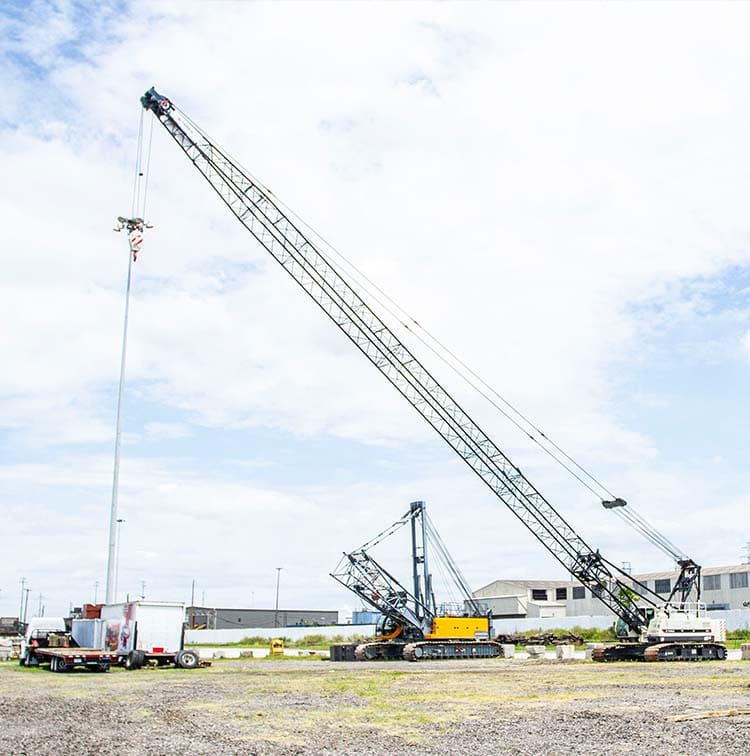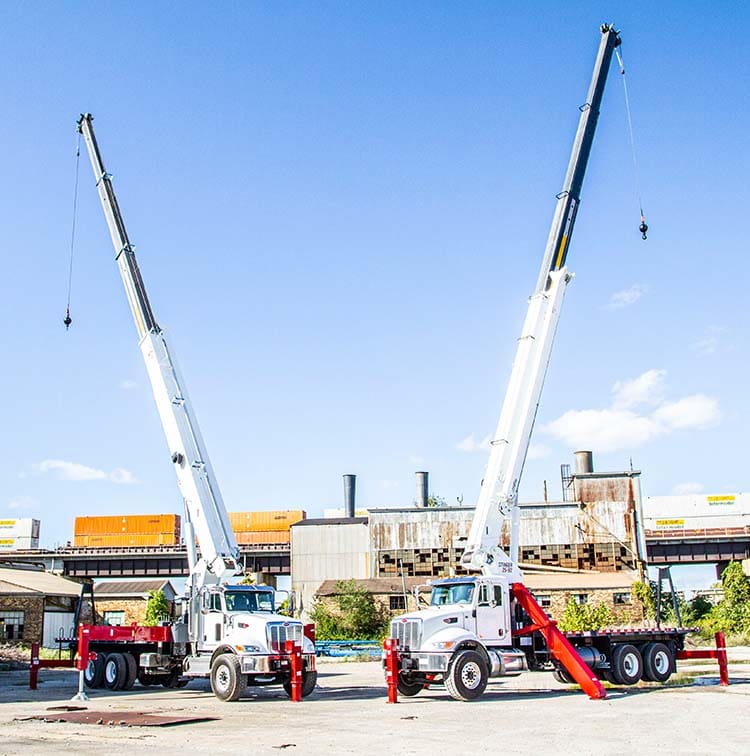

For Custom Truck One Source, a boom truck generally refers to a hydraulic crane mounted onto a commercial truck chassis. Most of these boom trucks are straight, telescopic booms, but the company also has articulated cranes that fit in the category of boom trucks.
We spoke to Steve Punch and Steve Shirk, both Product Managers for Cranes at Custom Truck One Source, as well as John Lukow, Senior Vice President of Cranes at Load King – the manufacturing arm of Custom Truck One Source, to get a lowdown on boom trucks, industry projections, Load King’s growth plans and so much more.
Excerpts from the interview:
What other industries use the term `boom trucks’?
Indeed, a lot of different industries have that term in their jargon. For example, if you look at the tree industry, the loader machines they use are called boom trucks. Drywall companies call their machines boom trucks or boom lifts. Some of the telescopic manlift companies also refer to their machines as boom trucks. So it’s important to understand the application of the boom truck to determine the type of equipment.
What is the difference between a boom truck and a crane?
Historically, whenever you talk about a crane, you’re talking about a hydraulic truck crane, which is a purpose-built machine, like the Load King 40, 60 and 80-ton truck cranes that are manufactured at Load King. They are purpose-built carriers designed specifically to haul around a crane.
There are a lot of industry jargon words floating around what Custom Truck One Source and Load King offer, but the bigger the equipment is, the more likely somebody will call it a crane. Technically, they are all cranes because they all lift and place various kinds of loads. In today’s world, where there are tower cranes, crawler cranes, knuckle boom cranes, etc., they all qualify because they all lift and place loads.
What are the different types of cranes and boom trucks?
Types of cranes would include tower cranes, all-terrain cranes, rough terrain cranes, crawler cranes and boom trucks.
There are several kinds of boom trucks — that is boom trucks or cranes mounted on a conventional chassis, like a Freightliner or Peterbilt or Kenworth. There are machines mounted behind the cab, with the boom stowed to the rear. There are machines that are mounted on fifth wheel tractors, called tractor mounts. There are machines that are mounted at the rear of the truck with the boom stowed forward, called rear mounts. And then, as you start getting into bigger boom trucks, there are some that are mounted over the rear axle, with the boom stowed forward, that are riding seat-style machines with enclosed cabs or open riding seats and they rotate with the turret.
What is the difference between rough terrain cranes and all-terrain cranes?
Rough terrain cranes are generally 2-3 axled machines that have large pneumatic tires. They are designed to be delivered to a job site on a trailer, as they are not permitted on a highway, and they are designed to drive on rough ground conditions. In most cases, they have what is called a pick-and-carry capacity, which means they can lift a load and drive with it, with the boom up in the air, but again they cannot go down highways. It is a job site machine only.
In contrast, all-terrain cranes have multiple axles. The larger hydraulic cranes are, in general, all-terrain cranes. They will have multiple driving axles and can run on the highway at reasonable highway speeds. To an extent, they can drive in reasonably rough terrain, but not like rough terrain cranes. In some cases, they will have what is call crab steer where all the axles will turn at one time so that you can move the machine in various directions.
What range of boom trucks and cranes does Custom Truck One Source carry?
Custom Truck offers a variety of boom trucks and cranes. We carry Load King Cranes from 10 to 80 tons. We carry National Cranes from 10 to 60 tons. We carry IMT and also sell Fassi and Hyva articulated cranes.
Is Custom Truck One Source the #1 dealer for any other brand?
We are number one dealer for National Crane, Elliott Equipment, and of course, Load King.

The only disadvantage that comes to mind is using the wrong crane in an application. For instance, cranes on barges must be able to lift a load with a certain amount of list in the barge. Putting a boom truck on a barge does not make it suitable for that application. Similarly, picking the correct sized crane for a job and not working at the very edge of a cranes capability is a better mode of operation.

Load King is manufacturing the boom truck line, telescopic truck cranes, and the Crossover series, previously branded as Terex. The acquisition marks the latest milestone in the continued expansion of Load King’s manufacturing portfolio.
For lighter lifting, nothing beats the flexibility and reliability of Load King boom truck cranes. Able to travel at highway speeds, Load King boom truck cranes let you get to the job site, get set up, and get to work fast. You’ll often see them working multiple projects on multiple sites the very same day. They’re the “go to” crane for your bread-and-butter jobs.
Combining highway mobility with heavy-lifting power, they feature quick positioning and rigging so you can get right to work without losing a second. Easy to operate and easy to maintain, they provide a cost-effective way to do more work and reach new heights with your business. The ergonomic cab offers a comfortable working environment that keeps the operator alert and productive from one job to the next.
Regardless of the jobsite conditions, Crossover boom trucks are designed to meet the most demanding performance expectations. Whether you’re faced with maneuvering in a tight jobsite or lifting heavy loads with precise control, you can be assured the Crossover will get the job done safely and quickly.
• Wireline is the first that comes to mind, and this is an application where a machine with a long enough boom backs right up to a wellhead and supports other pieces of machinery that measure temperature, depth and pressure in an oil and gas well.
• Coil tubing is another application where a boom truck backs right up to a wellhead, lifts a coil tubing injector, holds it on top of a well, and that device injects steel tubing down into the well to do the same thing: measure and drill.
• Commercial roofing is another industry that is particularly suited to boom trucks. A lot of these big, tall buildings that are built have flat roofs. On top of those flat roofs, they use rubber sheeting and then use boom trucks to raise gravel to the top of the buildings to hold all the material down.
• Powerline transmission companies, utilities, and municipalities are some other sectors that also need a lot of cranes.
• The third one is artificial lift. Most people know what a pump jack is, as they’re easy to spot when driving through states like Texas, Oklahoma, Pennsylvania, and North Dakota. These pump jacks, rocking back and forth, are heavy components that need a lot of maintenance. So these big, strong machines are designed to do maintenance such as lift parts, assemble pump jacks, disassemble them, move them, and so forth.


Picking the correct boom truck comes down to understanding the application. It is really three easy questions:
Those three questions will drive you to the right size crane. You also want to get the right amount of boom length so that you can do most of your jobs without using the jib as this takes longer to set up.